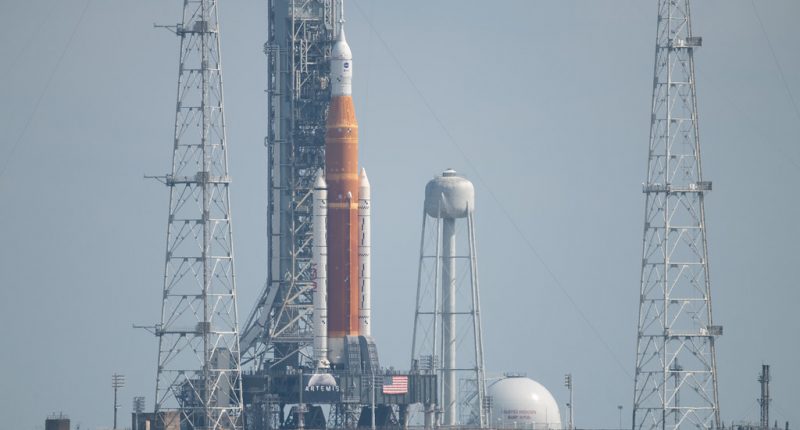A temperature issue with one of its engines resulted in the much-anticipated test flight of Artemis 1, NASA’s moon rocket being called off. According to a tweet by the US space agency, an “engine bleed’ was to blame for the scrubbed launch from the Kennedy Space Center in Cape Canaveral, Florida.
“The launch of Artemis 1 is no longer happening today as teams work through an issue with an engine bleed. Teams will continue to gather data, and we will keep you posted on the timing of the next launch attempt,” the tweet read.
What happened?
According to NASA, the issue occurred with one of the four RS-25 engines of the 322-foot-tall rocket, when a liquid hydrogen line did not adequately chill the engine. For those not in the know, the engines must be properly chilled before cryogenic liquid hydrogen and liquid oxygen flows through them before ignition commenced.
The countdown for ignition began on Saturday and continued throughout the weekend through early Monday morning. While there were no obstacles in the filling of the liquid oxygen tank, a fuel line (meant for the liquid hydrogen) at the bottom of the rocket was first spotted to be have a leak. After this problem was solved, one of the hydrogen lines to an engine failed to fully open during the last seconds of the countdown.
Engine 3 was the only one out of the four engines that failed to pass the test, despite troubleshooting efforts.
This “engine bleed” is but one of two problems that seems to have successfully postponed the launch today. In a statement, NASA wrote that its teams were assessing what seems to be a crack in the thermal protection system material on one of the flanges on the core stage.
These flanges, NASA wrote, are “connection joints that function like a seam on a shirt, are affixed at the top and bottom of the intertank so the two tanks can be attached to it.”
Since the lift-off of the Artemis 1 mission was put on hold at T-40 minutes before being scrubbed, the alternative dates for the launch are September 2 and 5.
The Artemis mission
A success on today’s mission would have been a feature in Artemis’ cap, which intends to put mankind on the moon for the first time in 50 years, but keeping a human presence on Mars as the endgame. The mannequins aboard the spacecraft were supposed to record acceleration, vibration and radiation levels with their sensors.
The Artemis 1 mission, which is an uncrewed flight around the Moon, was to be the debut of the Space Launch System, which is already more than five years behind schedule, and whose development costs of the program have soared from an original $7 billion to about $23 billion.
Artemis 2 is slated to take astronauts into orbit around the Moon without landing on its surface, while Artemis 3 is said to take the crew, including a woman and a person of color on the lunar surface for the first time, on the Moon by 2025.
The Tech Portal is published by Blue Box Media Private Limited. Our investors have no influence over our reporting. Read our full Ownership and Funding Disclosure →






